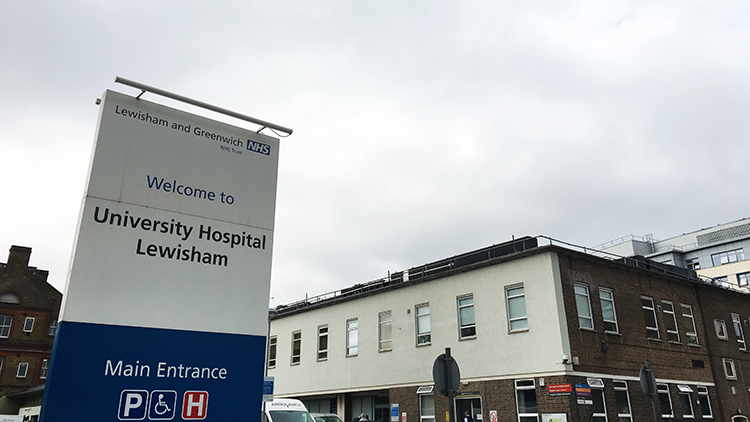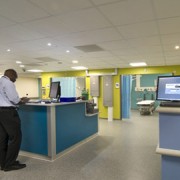
Lewisham University Hospital. Pic: Edward Spratt
Patients at Lewisham and Greenwich NHS Trust hospitals are more likely to die if admitted at the weekend, studies have shown.
In data published by the NHS on April 24, between October 2016 and September 2017, odds of dying in the southeast London hospitals were found to be higher for all patients at the weekend, including those admitted as an emergency.
In response to the data, a spokesperson from Lewisham and Greenwich NHS Trust told ELL: “These are experimental statistics produced by NHS Digital and show the odds of mortality rather than actual mortality. Across all NHS Trusts, mortality rates are higher at weekends because there are fewer admissions and patients tend to be sicker.
“NHS trusts use the summary hospital-level mortality indicator (SHMI) to measure mortality, and for 2017/18 Lewisham and Greenwich NHS Trust’s score was within expected levels.”
The NHS has been publishing the difference in mortality during the weekend and the midweek period, Tuesday to Thursday, since 2014. It is understood that there is a “weekend effect” in hospitals where deaths rates rise on Saturdays and Sundays.
Data Vis: Chart showing the death rate figures
The statistics do not show how likely you are to die, but simply a ratio of how many deaths occur at the weekend when compared to other periods of the week.
Health Secretary Jeremy Hunt said in a 2015 statement: “Around 6,000 people lose their lives every year because we do not have a proper 7-day service in hospitals. You are 15% more likely to die if you are admitted on a Sunday compared to being admitted on a Wednesday.”
To solve the issue of the weekend effect Hunt introduced seven-day working contracts for doctors, this resulted to the first all-out doctors’ strike in NHS history.
Last year a report by the Care Quality Commission (CQC), the independent regulator of health and social care in England, gave Lewisham and Greenwich NHS the “requires improvement” grade across every key area: safe, effective, caring, responsive and well-led.
The CQC said: “Despite a period of three years since our last comprehensive inspection, there remained areas of unresolved risks and areas for significant improvement. This included the acute emergency pathway at Queen Elizabeth Hospital [Woolwich] In part, a lack of decisive decision making by the trust leadership team contributed to a lack of overall progress across the organisation.”
Also, the trust has seen negligence pay outs rise to nearly £25m in the period of 2016/17. The increase in pay outs meant that Lewisham and Greenwich were ranked 14 out of the 286 NHS trusts in England.
The other three EastLondonLine boroughs, Croydon, Hackney and Tower Hamlets, have also seen high rates of negligence pay out over the past year with Barts NHS Trust, which covers Tower Hamlets and part of Hackney, paying out the largest sum of any NHS trust.
Lewisham and Greenwich sit with the fourth largest total pay-out for the whole country.




